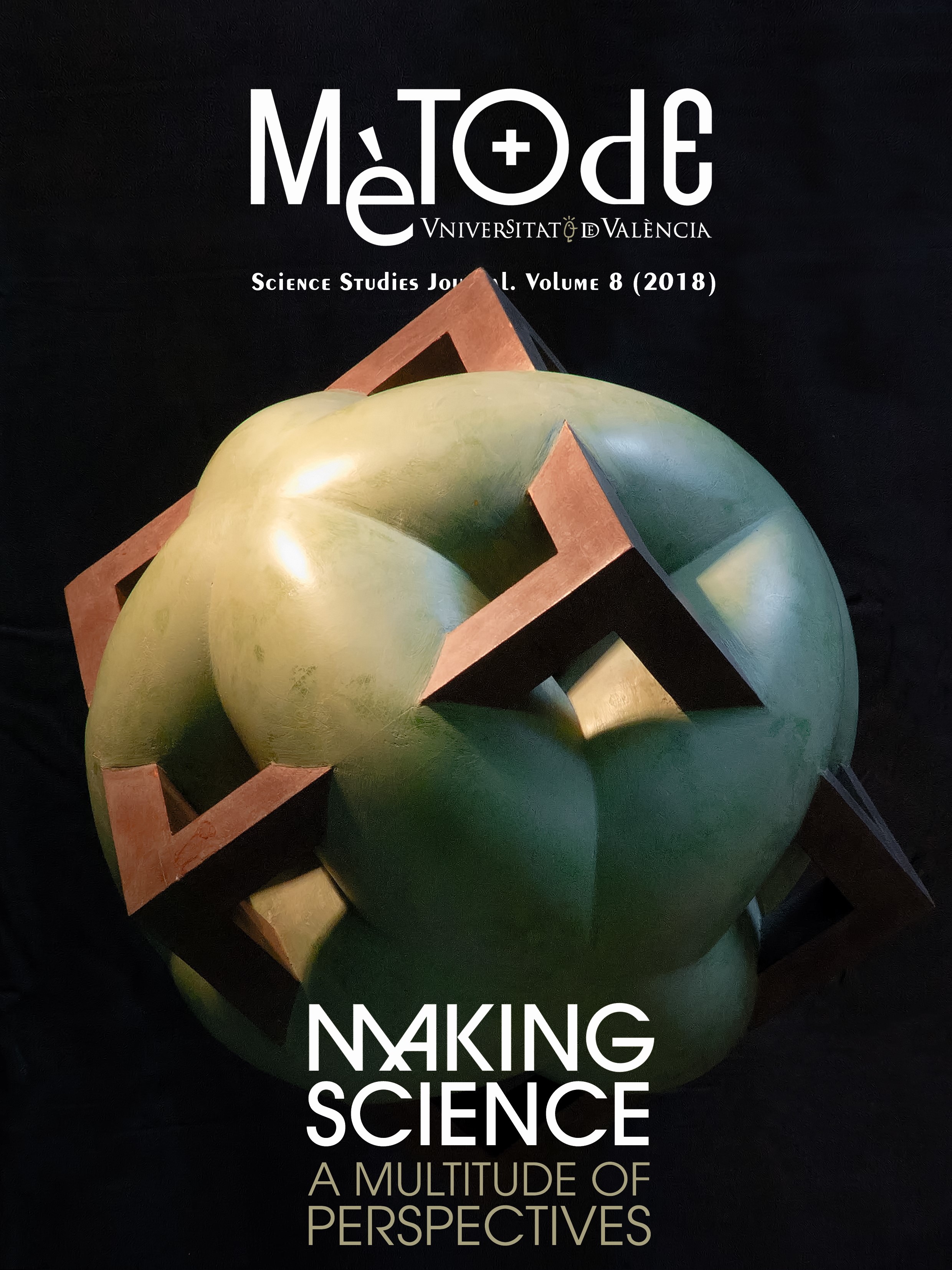The role of the brain in financial decisions: A viewpoint on neuroeconomics
DOI:
https://doi.org/10.7203/metode.0.6923Keywords:
financial markets, decision-making, neuroeconomics, brain Abstract
Abstract
In this article, we explain the important role neuroscience plays in economic and financial environments. Hence, we present neuroeconomics as a way to describe how decision-making processes affect brain activity, focusing especially on the importance of economic and financial decisions. We answer some questions regarding the role of emotions in finance, the psychological factors present in financial markets, and how neuropsychological stimuli affect our economic decisions. We conclude by citing the main research in the area of neuroscience in financial decision-making processes, and highlight further research projects in these areas.
 Downloads
Downloads
 References
References
Adolphs, R., Gosselin, F., Buchanan, T. W., Tranel, D., Schyns, P., & Damasio, A. R. (2005). A mechanism for impaired fear recognition after amygdala damage. Nature, 433(7021), 68–72. doi: 10.1038/nature03086
Bechara, A., Damasio, H., & Damasio, A. R. (2000). Emotion, decision making and the orbitofrontal cortex. Cerebral Cortex, 10(3), 295–307. doi: 10.1093/cercor/10.3.295
Bertrand, M., Mullainathan, S., & Shafir, E. (2006). Behavioral economics and marketing in aid of decision making among the poor. Journal of Public Policy & Marketing, 25(1), 8–23. doi: 10.1509/jppm.25.1.8
Biel, A., & Gärling, T. (1995). The role of uncertainty in resource dilemmas. Journal of Environmental Psychology, 15(3), 221–233. doi: 10.1016/0272-4944(95)90005-5
Blanchard, O. J., & Watson, M. W. (1982). Bubbles, rational expectations and financial markets. NBER Working Paper Series, 945. doi: 10.3386/w0945
Breiter, H. C., Aharon, I., Kahneman, D., Dale, A., & Shizgal, P. (2001). Functional imaging of neural responses to expectancy and experience of monetary gains and losses. Neuron, 30(2), 619–639. doi: 10.1016/S0896-6273(01)00303-8
Camerer, C. (2007). Neuroeconomics: Using neuroscience to make economic predictions. The Economic Journal, 117(519), C26–C42. doi: 10.1111/j.1468-0297.2007.02033.x
Camerer, C., Loewenstein, G., & Prelec, D. (2005). Neuroeconomics: How neuroscience can inform economics. Journal of Economic Literature, 43(1), 9–64. doi: 10.1257/0022051053737843
Damasio, H., Grabowski, T., Frank, R., Galaburda, A. M., & Damasio, A. R. (1994). The return of Phineas Gage: Clues about the brain from the skull of a famous patient. Science, 264(5162), 1102–1105. doi: 10.1126/-science.8178168
Davidson, R. J., Putnam, K. M., & Larson, C. L. (2000). Dysfunction in the neural circuitry of emotion regulation—A possible prelude to violence. Science, 289(5479), 591–594. doi: 10.1126/science.289.5479.591
Gallese, V., Keysers, C., & Rizzolatti, G. (2004). A unifying view of the basis of social cognition. Trends in Cognitive Sciences, 8(9), 396–403. doi: 10.1016/j.tics.2004.07.002
Gross, J. J., & John, O. P. (2003). Individual differences in two emotion regulation processes: Implications for affect, relationships, and well-being. Journal of Personality and Social Psychology, 85(2), 348–362. doi: 10.1037/0022-3514.85.2.348
Güth, W., Schmittberger, R., & Schwarze, B. (1982). An experimental analysis of ultimatum bargaining. Journal of Economic Behavior and Organization, 3(4), 367–388. doi: 10.1016/0167-2681(82)90011-7
Hsu, M., Bhatt, M., Adolphs, R., Tranel, D., & Camerer, C. F. (2005). Neural systems responding to degrees of uncertainty in human decision-making. Science, 310(5754), 1680–1683. doi: 10.1126/science.1115327
Jin, H., & Zhou, X. Y. (2011). Greed, leverage, and potential losses: A prospect theory perspective. Mathematical Finance, 23(1), 122–142. doi: 10.1111/j.1467-9965.2011.00490.x
Judge, T. A., & Bono, J. E. (2001). Relationship of core self-evaluations traits — self-esteem, generalized self-efficacy, locus of control, and emotional stability — with job satisfaction and job performance: A meta-analysis. Journal of Applied Psychology, 86(1), 80–92. doi: 10.1037/0021-9010.86.1.80
Kahneman, D. (2003). A perspective on judgment and choice: Mapping bounded rationality. American Psychologist, 58(9), 697–720. doi: 10.1037/0003-066X.58.9.697
Kosfeld, M., Heinrichs., M, Zak, P. J., Fischbacher, U., & Fehr, E. (2005). Oxytocin increases trust in humans. Nature, 435(2), 673–676. doi: 10.1038/nature03701
Low, C. (2004). The fear and exuberance from implied volatility of S&P 100 Index Options. The Journal of Business, 77(3), 527–546. doi: 10.1086/386529
Mayer, J. D., Roberts, R. D., & Barsade, S. G. (2008). Human abilities: Emotional intelligence. Annual Review of Psychology, 59, 507–536. doi: 10.1146/annurev.psych. 59.103006.093646
Mehta, P. H., & Beer, J. (2010). Neural mechanisms of the testosterone–aggression relation: The role of orbitofrontal cortex. Journal of Cognitive Neuroscience, 22(10), 2357–2368. doi: 10.1162/jocn.2009.21389
Rick, S., & Loewenstein, G. (2008). The role of emotion in economic behavior. In M. Lewis, J. M., Haviland-Jones, & L. Feldman Barret (Eds.), Handbook of emotions. Third edition (pp. 138–156). Nueva York, NY: Guilford Press.
Shiv, B., Loewenstein, G., Bechara, A., Damasio, H., & Damasio, A. R. (2005). Investment behavior and the negative side of emotion. Psychological Science, 16(6), 435–439. doi: 10.1111/j.0956-7976.2005.01553.x
Tseng, K. C. (2006). Behavioral finance, bounded rationality, neuro-finance, and traditional finance. Investment Management and Financial Innovations, 3(4), 7–18.
Westerhoff, F. H. (2004). Greed, fear and stock market dynamics. Physica A: Statistical Mechanics and its Applications, 343, 635–642. doi: 10.1016/j.physa.2004.06.059
Zak, P. J., Kurzban, R., Ahmadi, S., Swerdloff, R. S., Park, J., Efremidze, L., ... Matzner, W. (2009). Testosterone administration decreases generosity in the ultimatum game. PLoS One, 4(12), e8330. doi: 10.1371/journal.pone.0008330
Downloads
Published
How to Cite
-
Abstract3862
-
PDF1218
Issue
Section
License
![]()
All the documents in the OJS platform are open access and property of their respective authors.
Authors publishing in the journal agree to the following terms:
- Authors keep the rights and guarantee Metode Science Studies Journal the right to be the first publication of the document, licensed under a Creative Commons Attribution-NonCommercial-NoDerivatives 4.0 International License that allows others to share the work with an acknowledgement of authorship and publication in the journal.
- Authors are allowed and encouraged to spread their work through electronic means using personal or institutional websites (institutional open archives, personal websites or professional and academic networks profiles) once the text has been published.





